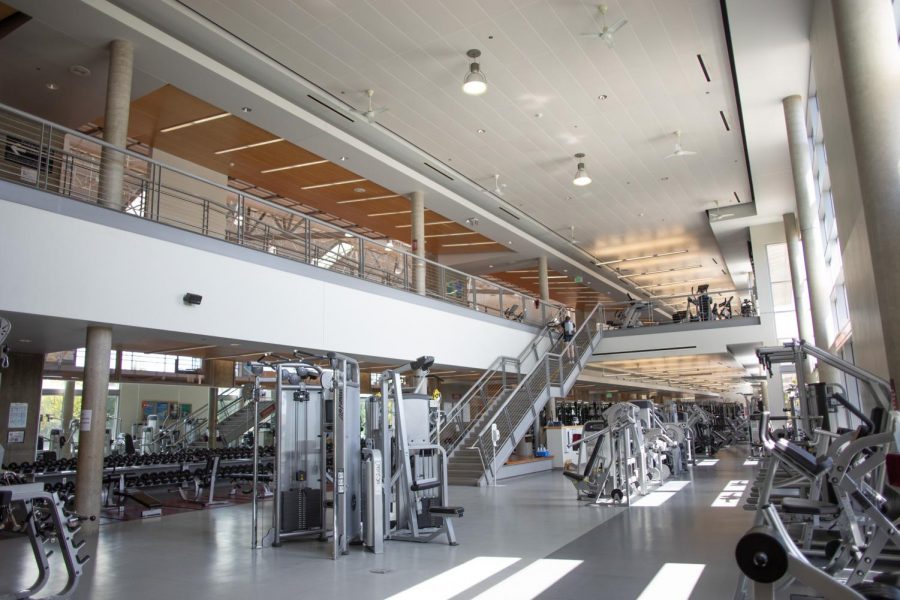University Recreation plans for Phase 3 reopening
Employees will wear protective gear like masks; implement increased sanitation, deep cleaning
COURTESY OF STUDENT AFFAIRS MARKETING
WSU’s Student Recreation Center on August 2019. University Recreation facilities are planning to open at 50 percent capacity as Whitman County enters Phase 3.
June 12, 2020
Recreational facilities can operate at 50 percent capacity in Phase 3. However, Gov. Jay Inslee has not provided specific requirements for how fitness centers can open safely.
WSU’s University Recreation staff does not know when facilities like the Student Recreation Center or Chinook Student Center will reopen, said Jeff Elbracht, director of University Recreation and Chinook Facilities.
In Phase 2, fitness centers can commence fitness classes with no more than five people, UREC Programming Director Joanne Greene said. Employees are working to put those measures in place.
UREC employees have already done much of the planning that will be necessary for reopening, Elbracht said, but they still need to know the government guidelines for Phase 3.
In-person fitness classes will start if they are allowed under future guidance, he said.
UREC will continue offering online programming, including fitness classes, Greene said.
Social distancing guidelines will be in place. To keep people farther apart, employees might block off every other piece of equipment, Elbracht said. Final plans have not been decided yet.
Employees will wear protective gear like masks and implement increased sanitation. There will be supplies for patrons to clean equipment before and after use, Elbracht said. Staff will be cleaning high-touch surfaces and deep cleaning at least once a day.
Elbracht said he does not think it will be difficult to keep the facilities at 50 percent capacity because there are fewer people using the facilities during the summer. The capacity limit includes both patrons and staff.
UREC may determine capacity based on the measures implemented for social distancing, provided those precautions keep capacity under 50 percent, Greene said.
“Looping off certain pieces of equipment … will kind of naturally disperse people and keep them under those capacity levels,” Elbracht said.
Greene said UREC will focus on keeping people farther apart more than monitoring capacity. They are considering plans for fall when capacity could become a problem once students return to campus.
“We don’t want people to have to wait outside or [wait] to be able to get into the weight room or into the Rec Center,” Greene said.
A reservation-based system in the fall may be necessary, she said, but nothing is set in stone.
UREC hopes to open most of its services, even if not all facilities are open, Elbracht said. This includes some of the outdoor services, like tennis courts.
“Our goal is what’s allowed to be open and that we feel that we can safely open and [keep] staffed and keep clean, we will open,” he said.
The Stephenson Fitness Center is typically only open for Alive! sessions during the summer, but there are no in-person sessions at least until the end of July, Greene said. That fitness center will not be open this summer.
The SRC pool will be open as long as future government guidance allows it, Greene said.
Student employees will be able to work again once the facilities open, she said. Depending on how many student employees have left Pullman, they may not be able to staff as they normally would.
In that case, they will fill in with full-time staff and graduate students who can run their operations, Greene said.
“We know that people want to be able get back into exercising and we want them to, too,” Elbracht said. “But we need to make sure that we can do it in a way that’s going to be safe.”











Diane Curewitz • Jun 12, 2020 at 12:02 pm
There is no way to be physically distant from other patrons in the Chinook locker room. If I do renew my membership, I won’t be using the locker room or shower room there.